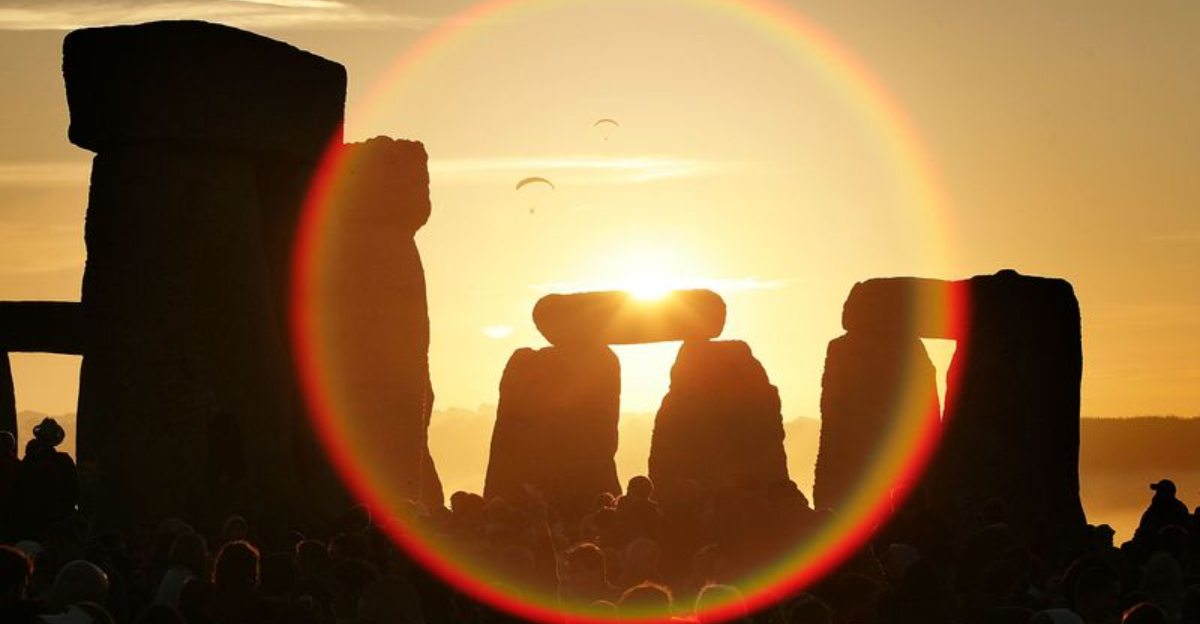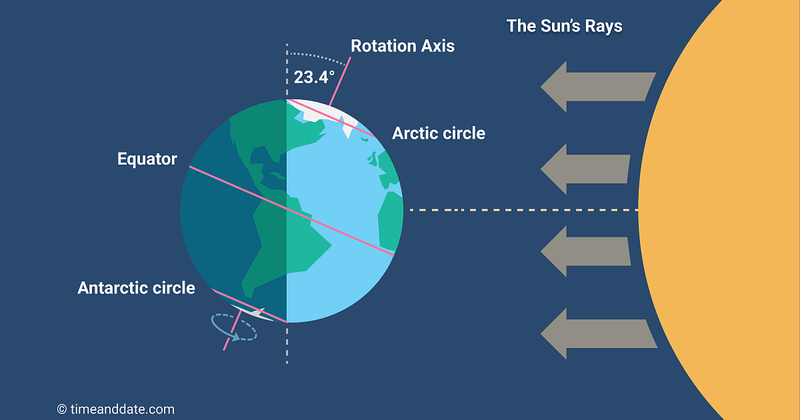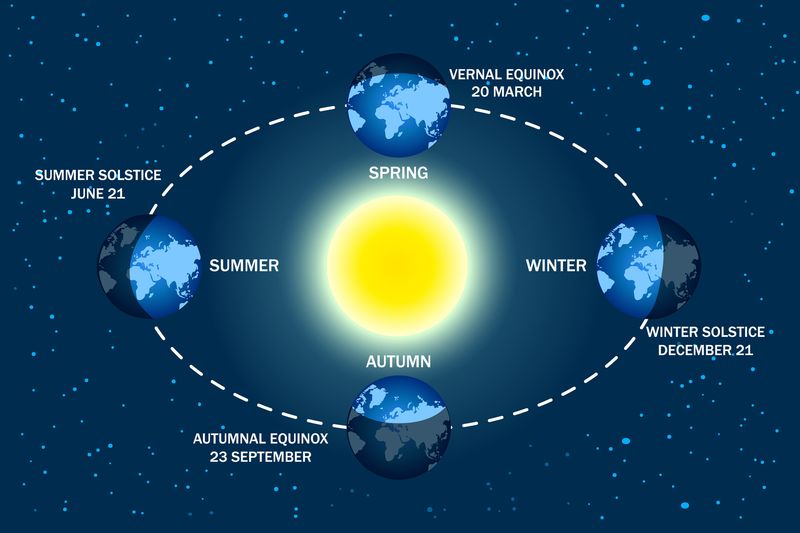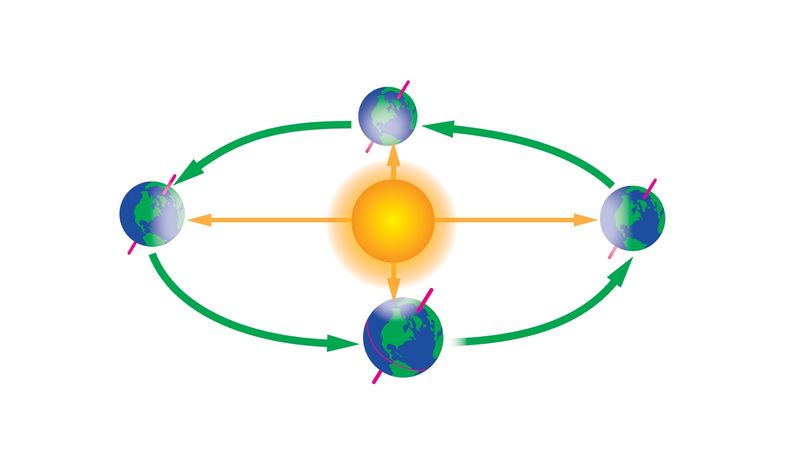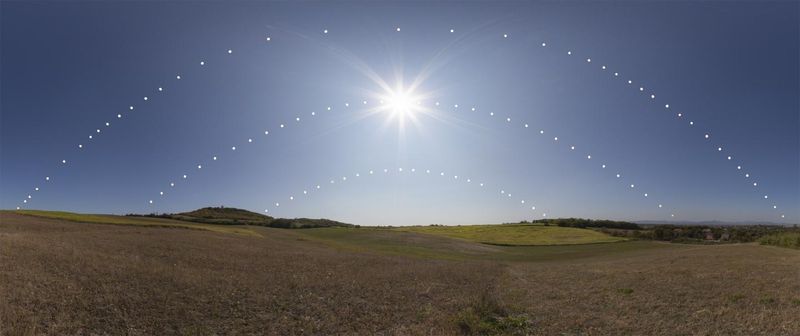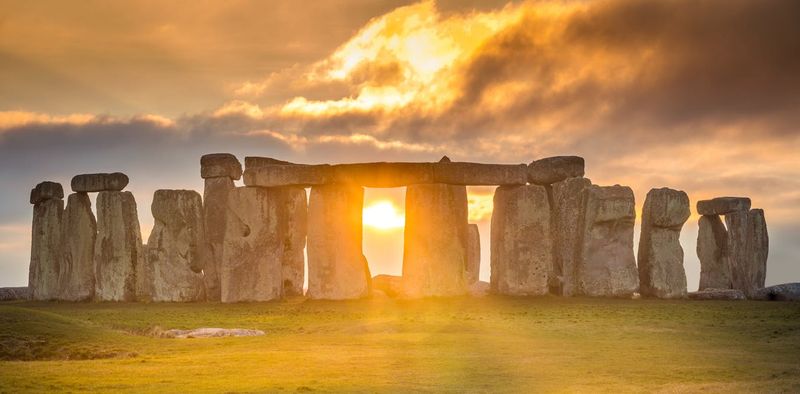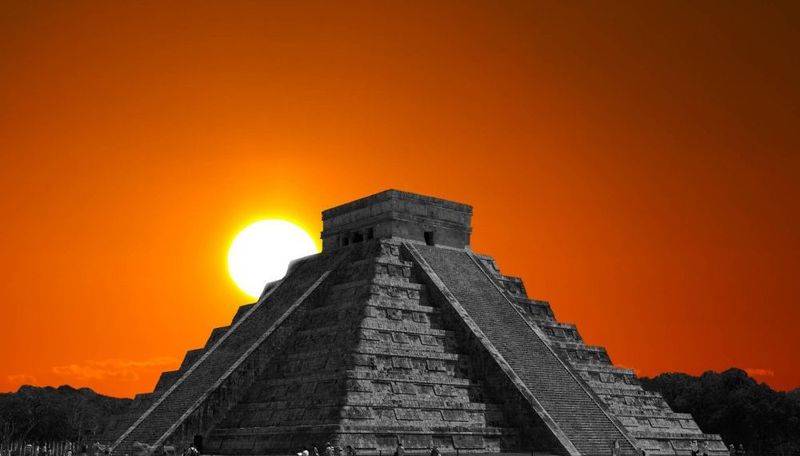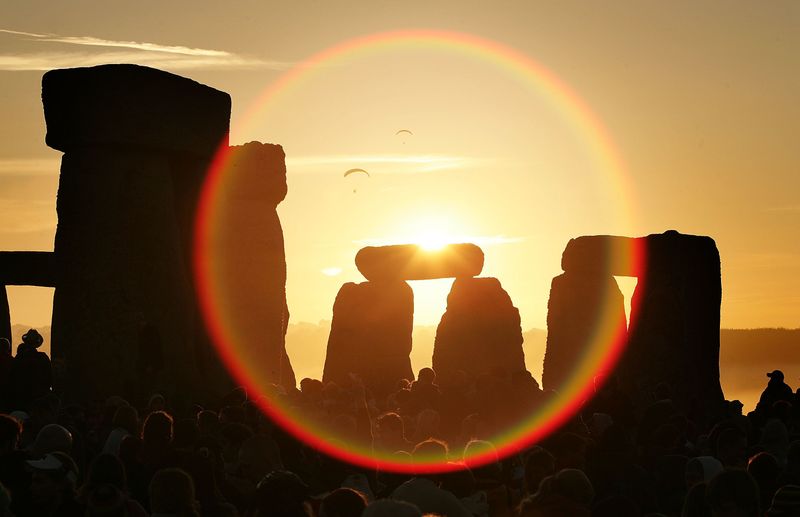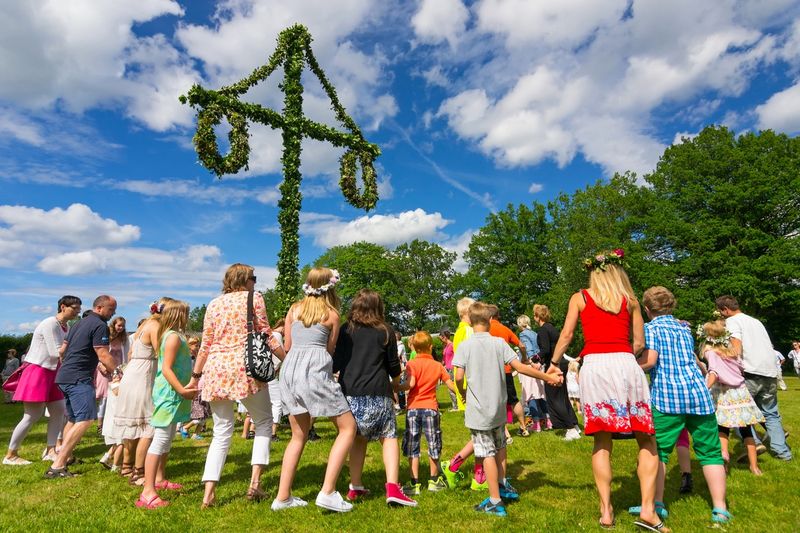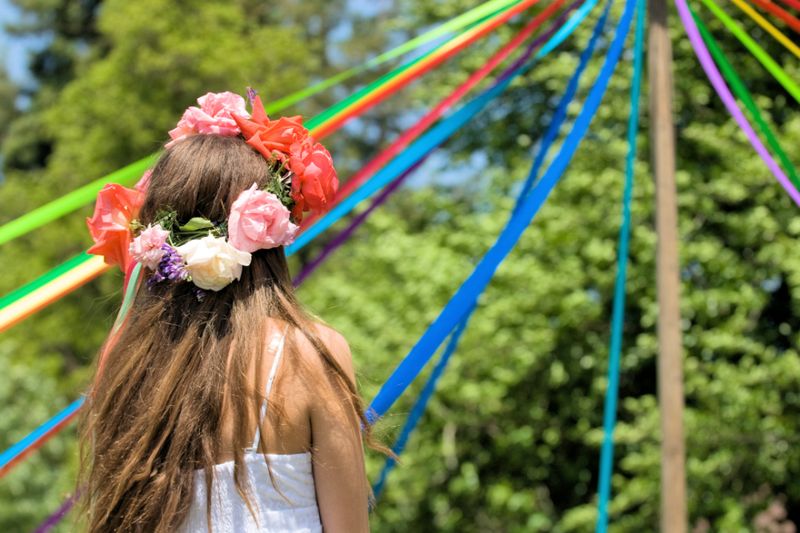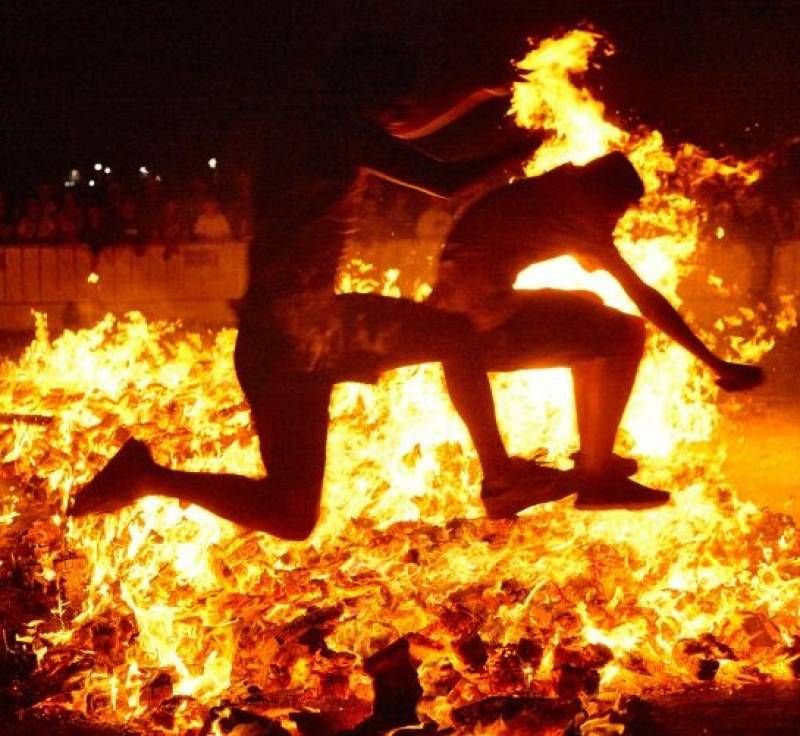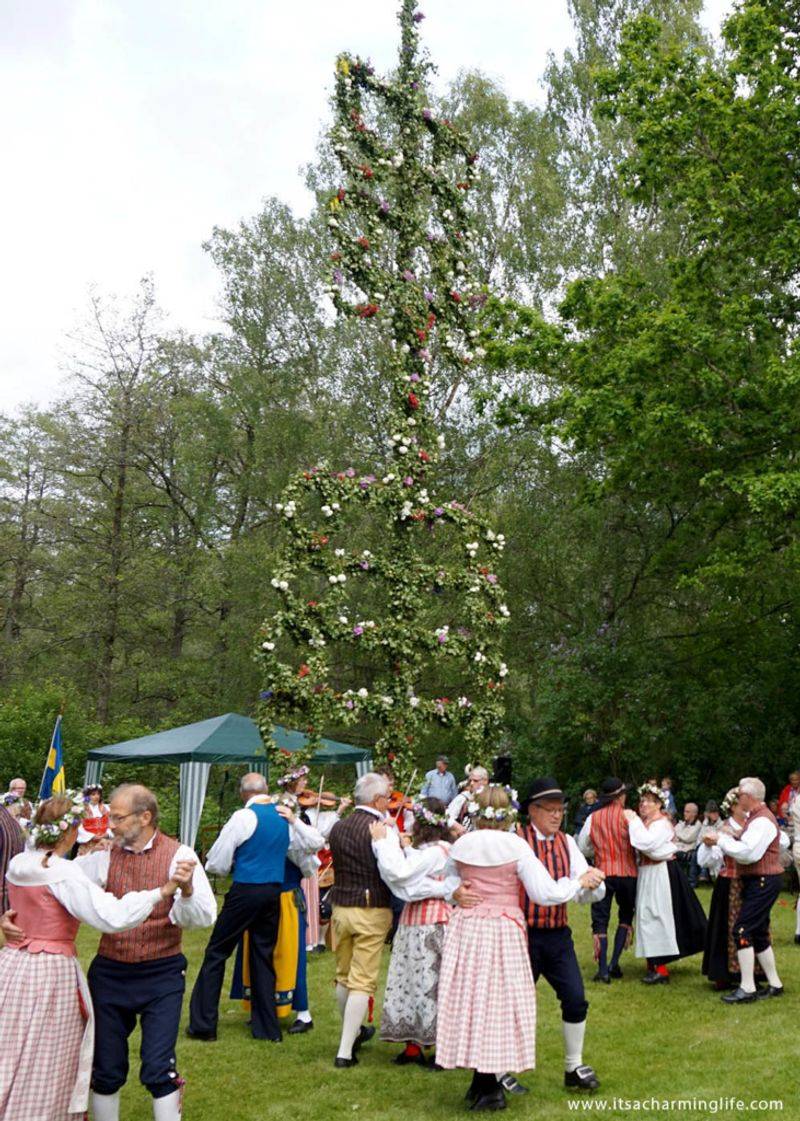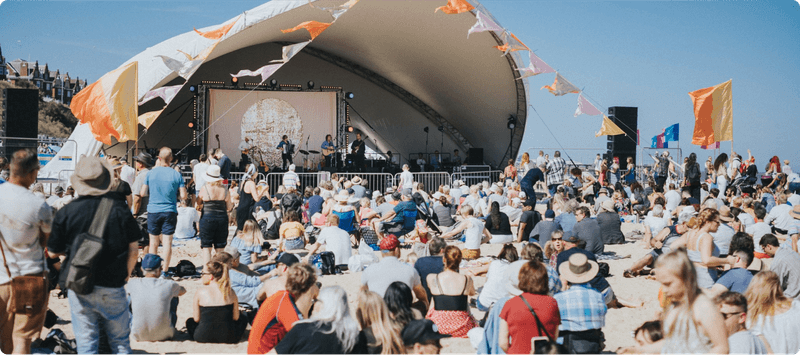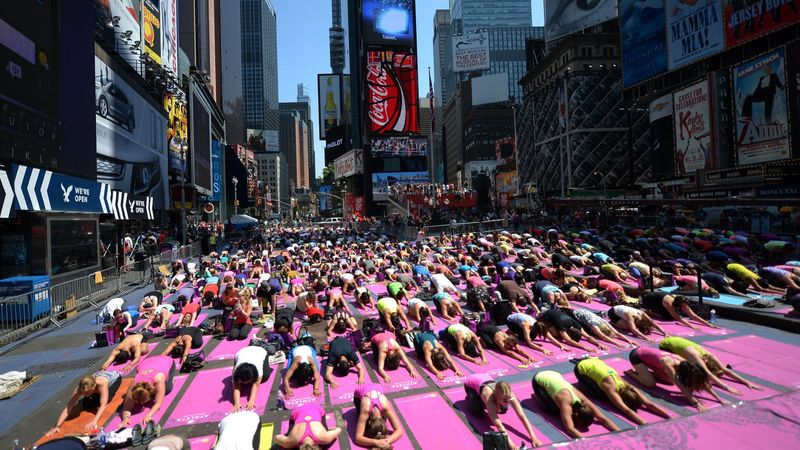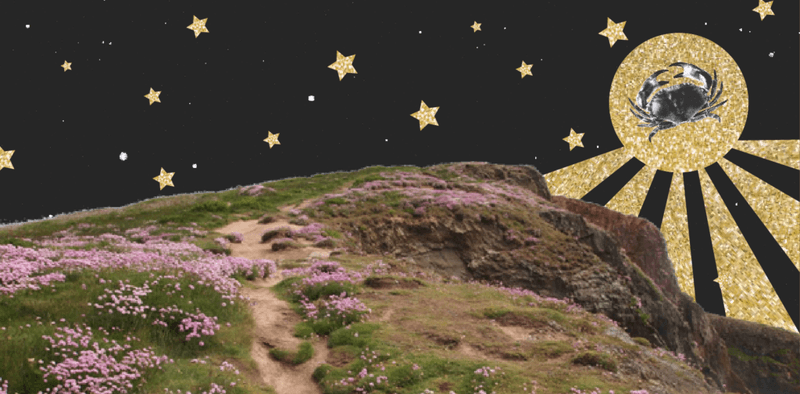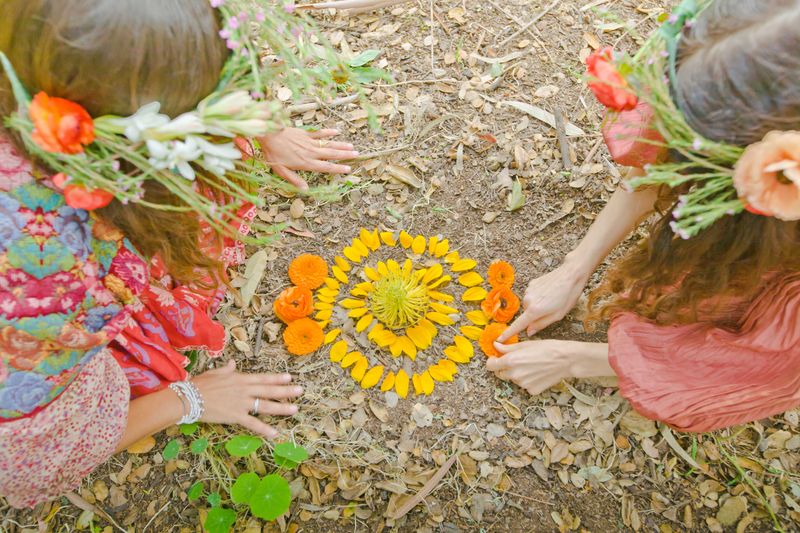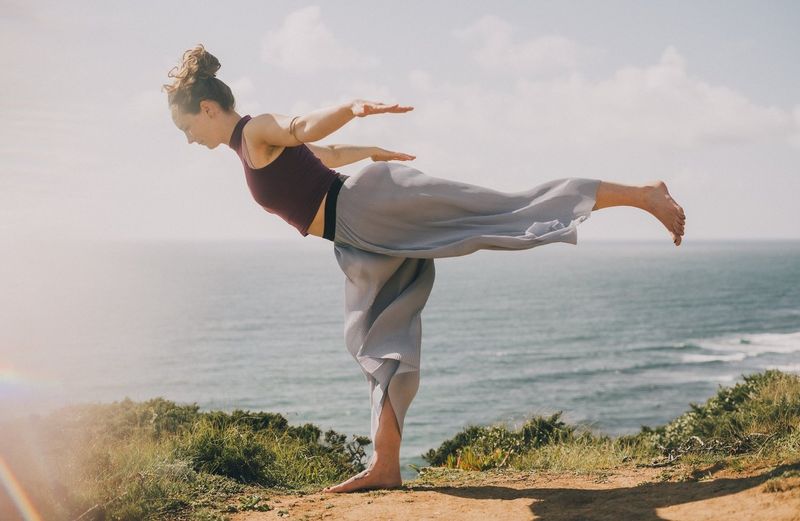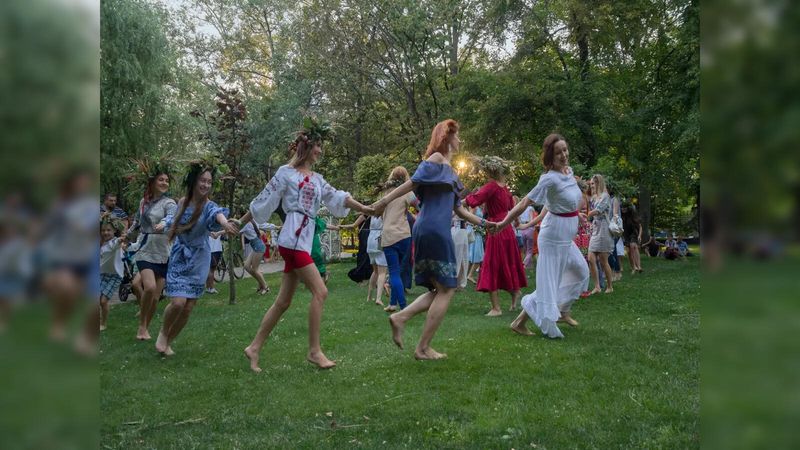The summer solstice marks the longest day of the year in the Northern Hemisphere, a moment when Earth’s tilt brings us closest to the sun. For thousands of years, humans have observed this astronomical event with rituals, celebrations, and monuments dedicated to the sun’s power. From ancient stone circles to modern festivals, the summer solstice continues to captivate our imagination and connect us to natural cycles.
1. What Is the Summer Solstice?
The summer solstice occurs when Earth’s axis tilts most directly toward the sun, creating the year’s longest daylight hours in the Northern Hemisphere. This pivotal moment happens once annually, usually between June 20-22.
Ancient civilizations tracked this celestial event using stone monuments and other primitive tools, recognizing its importance for agriculture and seasonal planning. The word “solstice” itself tells the story—it comes from Latin words meaning “sun standing still.”
While northerners enjoy peak daylight, the Southern Hemisphere simultaneously experiences its winter solstice—the shortest day of their year.
2. Astronomical Start of Summer
While meteorologists consider June 1st the beginning of summer for record-keeping simplicity, astronomers point to the solstice as summer’s true starting point. This scientific distinction matters for understanding seasonal shifts.
The astronomical calendar divides the year based on Earth’s position relative to the sun. When the solstice arrives, the Northern Hemisphere receives maximum solar energy, officially triggering summer.
Interestingly, this doesn’t mean the hottest days arrive immediately. Due to thermal lag—the time it takes land and water to heat up—peak summer temperatures typically occur weeks after the solstice itself.
3. Exact Timing Varies
Unlike holidays fixed to specific calendar dates, the summer solstice drifts slightly each year. Astronomers can pinpoint its arrival to the exact minute—in 2025, it occurs on June 20 at 10:42 p.m. UTC (6:42 p.m. Eastern Time).
This shifting schedule happens because Earth takes approximately 365.25 days to orbit the sun, not precisely 365. Our calendar adjusts with leap years, but the solstice timing still wobbles slightly.
The exact moment of solstice is universal worldwide, though local time zones determine when people experience it. Some years it falls on June 20, others on June 21 or even occasionally June 22.
4. Solar “Stand Still”
The term “solstice” beautifully captures what ancient skywatchers observed—solstitium in Latin literally means “sun standing still.” For several days surrounding the solstice, the sun appears to pause in its journey across the sky.
Early observers noticed that the sun’s rising and setting positions along the horizon stopped shifting northward. This apparent pause happens because the sun reaches its northernmost position relative to Earth’s equator.
Ancient cultures found this moment mystical and powerful. The sun seemed to hover at its highest point before beginning its six-month retreat southward, a celestial turning point that inspired rituals marking the transition between growing and harvesting seasons.
5. Stonehenge Alignment
Stonehenge stands as humanity’s most famous solstice monument, built with astonishing astronomical precision around 5,000 years ago. During the summer solstice sunrise, the sun’s first rays shine directly through the structure’s central axis, creating a magnificent alignment with the Heel Stone.
Modern crowds numbering in the thousands gather annually to witness this ancient spectacle. Druids, pagans, tourists, and curious onlookers wait through the night for that magical moment when sunlight pierces the monument exactly as the builders intended.
This perfect alignment wasn’t accidental. It demonstrates that Neolithic people possessed sophisticated understanding of celestial movements, embedding this knowledge into massive stone architecture that still functions as a solar calendar today.
6. Ancient Astronomical Sites
Stonehenge isn’t alone in tracking the solstice—ancient people worldwide built monuments aligned with the sun’s movements. At Chichén Itzá in Mexico, the pyramid of Kukulcán creates a serpent-shaped shadow during solstices, while Egypt’s Great Pyramid casts no shadow at noon.
The Bighorn Medicine Wheel in Wyoming features cairns marking solstice sunrise positions. Native American sites like Chaco Canyon in New Mexico contain buildings and rock art precisely aligned with solstice light patterns.
These diverse structures share a common purpose: marking humanity’s understanding of celestial cycles. Despite being built by cultures separated by vast distances without communication, they reveal our universal fascination with the sun’s yearly journey.
7. Cultural Significance
The summer solstice resonates deeply across human cultures as a powerful symbol of life’s abundance. Ancient farming societies recognized this moment as a promise of coming harvests, when the sun’s energy reached its peak potential for ripening crops.
Many traditions connect the solstice with fertility—both agricultural and human. The maximum daylight represented nature’s generosity and life’s renewal, inspiring ceremonies to honor these gifts.
From Chinese celebrations balancing yin-yang energies to Native American sun dances, diverse cultures developed unique interpretations while sharing core themes: gratitude for light, recognition of natural cycles, and community bonding through shared rituals that continue into modern times.
8. Summer Solstice Festivals
European midsummer celebrations showcase some of the world’s most vibrant solstice traditions. Scandinavians embrace the season with maypole dancing, where ribbons create intricate patterns as dancers weave around tall decorated poles symbolizing fertility and nature’s abundance.
Latvia’s Jāņi festival features overnight celebrations with special cheeses, beer, and jumping over bonfires for good luck. Lithuanians observe Rasos by floating flower wreaths down rivers while singing traditional songs.
Modern interpretations of these ancient festivals continue growing in popularity. People increasingly seek connection with seasonal rhythms in our digital age, finding meaning in these age-old community celebrations that honor the sun’s peak moment.
9. Maypoles & Flower Crowns
Maypoles embody the solstice spirit with their vibrant ribbons and towering presence. Originally fertility symbols representing the union of masculine (pole) and feminine (circular dance), these structures become community gathering points where intricate dances weave ribbons into beautiful patterns.
Flower crowns complement these celebrations as personal adornments connecting wearers to nature’s peak abundance. Traditionally crafted from local wildflowers and herbs like St. John’s Wort, believed to absorb the solstice sun’s special healing properties.
Creating these botanical headpieces remains a beloved solstice activity, with friends gathering to collect blooms and craft crowns while sharing stories. The tradition has experienced modern revival through music festivals and bohemian fashion trends.
10. Bonfire Rituals
Fire ceremonies illuminate the solstice night across countless cultures, creating powerful community focal points. These ancient traditions serve multiple symbolic purposes—the flames represent the sun’s power, purify participants, and ward off evil spirits during this mystical turning point.
Baltic countries maintain particularly strong bonfire traditions. Estonians, Latvians and Lithuanians gather around massive fires, sometimes staying awake until sunrise while singing traditional songs and performing rituals for prosperity.
Spain’s coastal communities create bonfires directly on beaches, with brave participants jumping over smaller flames for good luck. The act symbolizes purification—leaping through fire to burn away the old and emerge renewed for the coming season.
11. Sweden’s Midsummer
Sweden transforms during midsommar celebrations, when cities empty as people retreat to countryside cottages for the nation’s most beloved holiday. Families gather to raise flower-adorned maypoles (midsommarstång) in village greens, dancing around them while mimicking frogs—a quirky tradition bringing smiles to all ages.
Food takes center stage with pickled herring, new potatoes with dill, and strawberry cakes featuring prominently. No celebration feels complete without aquavit, a traditional spirit accompanied by singing drinking songs.
Unmarried girls traditionally place seven different flowers under their pillows on midsummer night, believing they’ll dream of their future spouse. This blend of pagan traditions and modern family gatherings creates Sweden’s quintessential summer experience.
12. Spain’s San Juan
Spanish beaches transform into magical realms during La Noche de San Juan (St. John’s Eve), coinciding with the summer solstice. As darkness falls, coastlines light up with hundreds of bonfires while fireworks paint the sky in spectacular displays.
Tradition holds that jumping over a bonfire three times brings good luck and purification. More adventurous participants take midnight swims, believing the water holds special cleansing properties during this night.
Barcelona celebrates with particular enthusiasm, where locals discard old furniture into ceremonial fires, symbolically burning unwanted aspects of their lives. Communities share special pastries, music fills the air, and celebrations continue until sunrise—a joyful welcome to summer.
13. Edinburgh’s Ride to the Sun
Modern traditions continue emerging around the solstice, with Edinburgh’s “Ride to the Sun” standing out as a particularly magical experience. Hundreds of cyclists gather in Scotland’s capital at midnight to begin a 100-mile journey eastward toward the coastal town of Crammond.
Their mission? Racing darkness itself to witness sunrise over the North Sea. Participants pedal through the brief summer night, guided by the camaraderie of fellow riders and the unique quality of Scotland’s midsummer twilight.
Upon reaching their destination, these modern-day sun-chasers celebrate with breakfast on the beach while watching dawn break across the water. This contemporary ritual captures the solstice spirit of community, challenge, and connection with natural cycles.
14. Lowestoft’s First Light Festival
Britain’s most easterly town embraces its unique geographic position with the First Light Festival—a 24-hour celebration centered on Lowestoft’s earliest-in-Britain sunrise. This arts-focused event transforms the Suffolk beach into a vibrant cultural space spanning the entire solstice day and night.
Festival-goers experience continuous programming including live music stages, art installations illuminated by sunset colors, and midnight astronomy sessions. Silent discos under the stars and sound bath meditations offer contemplative moments between more energetic activities.
The celebration culminates as thousands gather along the shoreline for sunrise, many having stayed awake through the shortest night. This moment of collective witnessing connects participants to ancient solstice traditions while creating thoroughly modern community bonds.
15. Global Yogis Unite
The summer solstice and International Yoga Day share June 21st, creating a powerful synchronicity that yoga practitioners worldwide embrace. This deliberate calendar alignment celebrates the balance between inner and outer light—yoga’s philosophical core beautifully complementing the solstice’s natural symbolism.
Mass yoga gatherings occur in iconic locations, from New York’s Times Square to India’s sacred rivers. Thousands of colorful mats create geometric patterns as participants flow through sun salutations honoring both the external sun and internal consciousness.
The solstice represents perfect balance between opposing forces—maximum light before darkness returns—mirroring yoga’s emphasis on finding equilibrium between opposing energies. Many practitioners believe solstice practice carries special transformative potential during this cosmic turning point.
16. Astrological Transition
Astrologers mark the solstice as a significant celestial shift when the sun moves from intellectual Gemini into nurturing Cancer. This transition carries meaningful symbolism—from spring’s outward energy to summer’s more introspective, emotional qualities.
Cancer season encourages connecting with home, family, and emotional foundations. The cardinal water sign’s influence supposedly heightens intuition and sensitivity during this period, making it ideal for deepening relationships and honoring ancestral connections.
Many practicing astrologers recommend special rituals during this powerful transition point. Setting intentions related to emotional growth, home projects, or family healing supposedly carries extra manifestation power when aligned with this cosmic doorway between seasons.
17. Local Rituals & Crafts
Contemporary solstice celebrations often incorporate personalized rituals drawing on ancient practices. Many create sun-infused water by placing glass containers in direct solstice sunlight, believing it captures special energetic properties for later use in cooking or bathing.
Flower mandalas represent another popular modern tradition. Participants gather blooms in concentric circular patterns, creating temporary natural art that celebrates the sun’s radiance while acknowledging life’s impermanence.
Intention-setting rituals have gained particular popularity. People write goals on biodegradable paper, then ceremonially burn them in solstice fires or plant them with seeds, symbolically growing their desires with the remaining summer light. These accessible practices help modern humans connect with seasonal awareness.
18. Nature Connection
The solstice inspires profound reconnection with the natural world. Wild swimming gains particular popularity, with brave souls taking dawn dips in lakes, rivers, and oceans worldwide to physically immerse in the season’s turning point.
Sunrise yoga sessions in natural settings help practitioners harmonize with the sun’s energy. Many gardeners consider solstice plantings especially potent, with certain herbs traditionally harvested only during this time for maximum medicinal properties.
Solstice hikes to elevated viewpoints let participants literally witness the sun’s journey across its longest path. These direct experiences of natural phenomena remind us of our place within larger cycles—something ancestors understood intimately but modern lifestyles often obscure.
19. Harvest Marker
Agricultural societies traditionally viewed the solstice as a crucial calendar marker for crop development. Ancient Chinese farmers used this day to assess wheat maturity, while Egyptian communities monitored Nile flooding patterns that would determine harvest abundance.
Many cultures held feasts featuring the first fruits of early summer—strawberries, cherries, and young vegetables—as gratitude offerings for the sun’s nurturing power. These celebrations acknowledged the sun’s essential role in food production.
Though most modern people disconnect from agricultural cycles, farmers’ markets and CSA programs experience increased popularity around the solstice. This timing offers a meaningful opportunity to appreciate seasonal eating patterns and reconnect with food’s origins during peak growing season.
20. Bridge Between Light & Darkness
The solstice represents a powerful threshold moment—the fulcrum point where light reaches maximum expression before gradually surrendering to increasing darkness. Many spiritual traditions view this transition as a potent time for personal transformation.
Ritual releasing ceremonies help participants consciously navigate this turning point. People write aspects of themselves they wish to leave behind, then burn these notes in solstice fires, symbolically transforming limitations through the sun’s peak power.
Simultaneously, the solstice invites setting intentions for the coming half-year. The energy of maximum light supposedly empowers new beginnings, with many believing this cosmic doorway particularly supports growth-oriented goals aligned with one’s authentic purpose.
21. Modern Global Gatherings
Contemporary solstice celebrations blend ancient traditions with modern expressions, creating vibrant global gatherings. Ottawa’s Summer Solstice Indigenous Festival honors First Nations cultures with powwows, music, and traditional foods, drawing thousands to celebrate indigenous heritage.
Fairbanks, Alaska hosts the unique Midnight Sun Festival, where residents enjoy 24-hour daylight with baseball games starting at midnight under natural light. Solar-powered music festivals have emerged worldwide, powering performances entirely through the sun’s peak energy.
From fire ceremonies at California’s beaches to meditation circles in Japan’s forests, these diverse celebrations share common elements: community gathering, natural awareness, and recognition of our place within cosmic cycles—timeless human needs finding expression in both ancient and emerging traditions.
